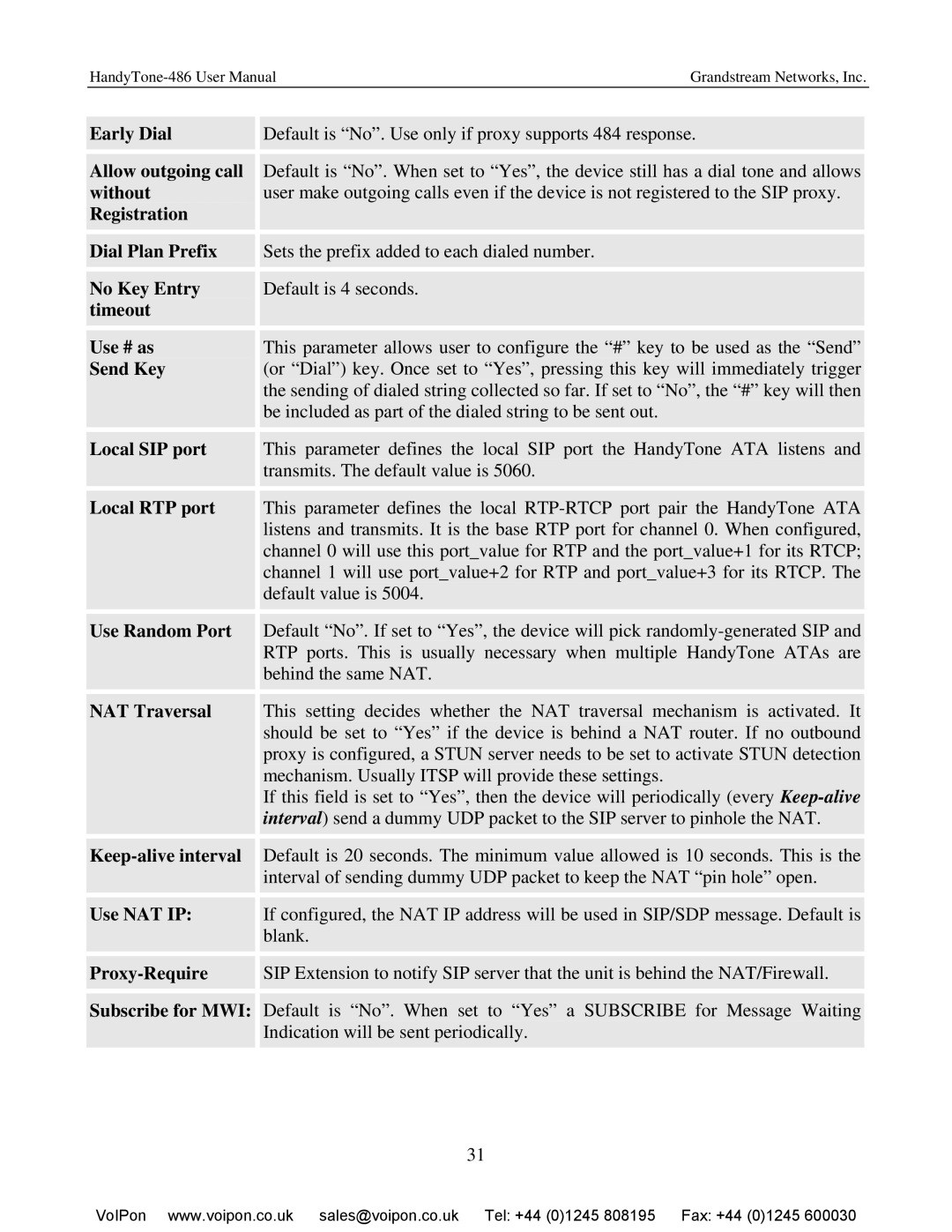
Grandstream Networks, Inc. |
Early Dial
Allow outgoing call without Registration
Dial Plan Prefix
No Key Entry timeout
Use # as
Send Key
Local SIP port
Local RTP port
Use Random Port
NAT Traversal
Use NAT IP:
Subscribe for MWI:
Default is “No”. Use only if proxy supports 484 response.
Default is “No”. When set to “Yes”, the device still has a dial tone and allows user make outgoing calls even if the device is not registered to the SIP proxy.
Sets the prefix added to each dialed number.
Default is 4 seconds.
This parameter allows user to configure the “#” key to be used as the “Send” (or “Dial”) key. Once set to “Yes”, pressing this key will immediately trigger the sending of dialed string collected so far. If set to “No”, the “#” key will then be included as part of the dialed string to be sent out.
This parameter defines the local SIP port the HandyTone ATA listens and transmits. The default value is 5060.
This parameter defines the local
Default “No”. If set to “Yes”, the device will pick
This setting decides whether the NAT traversal mechanism is activated. It should be set to “Yes” if the device is behind a NAT router. If no outbound proxy is configured, a STUN server needs to be set to activate STUN detection mechanism. Usually ITSP will provide these settings.
If this field is set to “Yes”, then the device will periodically (every
Default is 20 seconds. The minimum value allowed is 10 seconds. This is the interval of sending dummy UDP packet to keep the NAT “pin hole” open.
If configured, the NAT IP address will be used in SIP/SDP message. Default is blank.
SIP Extension to notify SIP server that the unit is behind the NAT/Firewall.
Default is “No”. When set to “Yes” a SUBSCRIBE for Message Waiting Indication will be sent periodically.
31
VoIPon www.voipon.co.uk sales@voipon.co.uk Tel: +44 (0)1245 808195 Fax: +44 (0)1245 600030
